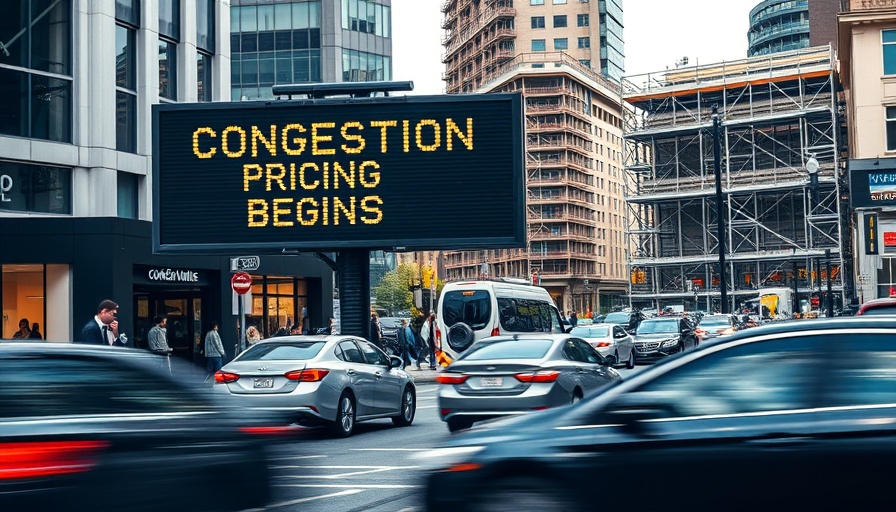
Understanding New York's Legal Battle Over Congestion Pricing
New York's congestion pricing program aims to reduce traffic and pollution while generating significant revenue for public transportation investments. As the state faces a legal challenge from former President Donald Trump, the outcome of this case has broader implications for urban policy initiatives across the country.
The Details of the Case: What’s at Stake?
New York officials are asking a judge to prevent Trump from dismantling the congestion pricing program, which was set to charge drivers entering Manhattan's busiest areas. This program is not only a response to escalating traffic concerns but also a way to channel funds into improving the city’s aging transit system. With increased traffic during peak hours, implementing such a program is seen as a pressing need.
Broader Implications for Urban Infrastructure
Urban areas around the United States face similar traffic and pollution challenges. New York’s congestion pricing could set a precedent for other cities looking to combat urban congestion. Cities like San Francisco and Los Angeles are closely monitoring this case, as the ruling could influence their own transportation policies and funding mechanisms.
The Economic Argument: Funding Public Transportation
According to proponents, congestion pricing is a critical source of revenue for public transport enhancements. This funding could directly impact various aspects of urban life, including affordability and efficiency of public transit options. Critics, however, voice concerns about the fairness of imposing additional fees on drivers, particularly low-income individuals who rely on driving for their daily commutes.
Public Opinion: Urban Residents Weigh In
The public's response to congestion pricing reflects a divide. Some support the initiative for its potential to alleviate congestion and improve air quality, while others worry about added expenses during a time of economic uncertainty. This polarized opinion underscores a larger dialogue on how urban areas should balance growth, sustainability, and affordability.
Impact on Real Estate and Investment Strategies
Legal challenges like this one also have implications for real estate investing. High congestion areas could see property values shift based on how effective congestion pricing proves to be. Investors may need to consider these dynamics when assessing potential real estate options. Homes closer to efficient public transport may become more valuable while areas further from such infrastructures could decrease in desirability.
Future Predictions: What Comes Next?
As the legal proceedings unfold, analysts predict that if the congestion pricing survives Trump's challenge, more cities may adopt similar measures, especially those grappling with severe urban congestion and climate change concerns. This could pave the way for a national conversation about sustainable urban planning and infrastructural investments.
Conclusion: The Call to Action for Urban Policy
As the dynamics of urban transportation evolve, it's crucial for citizens to engage in discussions surrounding these vital infrastructure initiatives. Strategic investments and policy decisions made now could significantly impact public health, economic vitality, and environmental sustainability in the coming years. Staying informed and voicing opinions on such matters is vital as urban centers forge pathways to a greener future.
 Add Row
Add Row  Add
Add 



Write A Comment